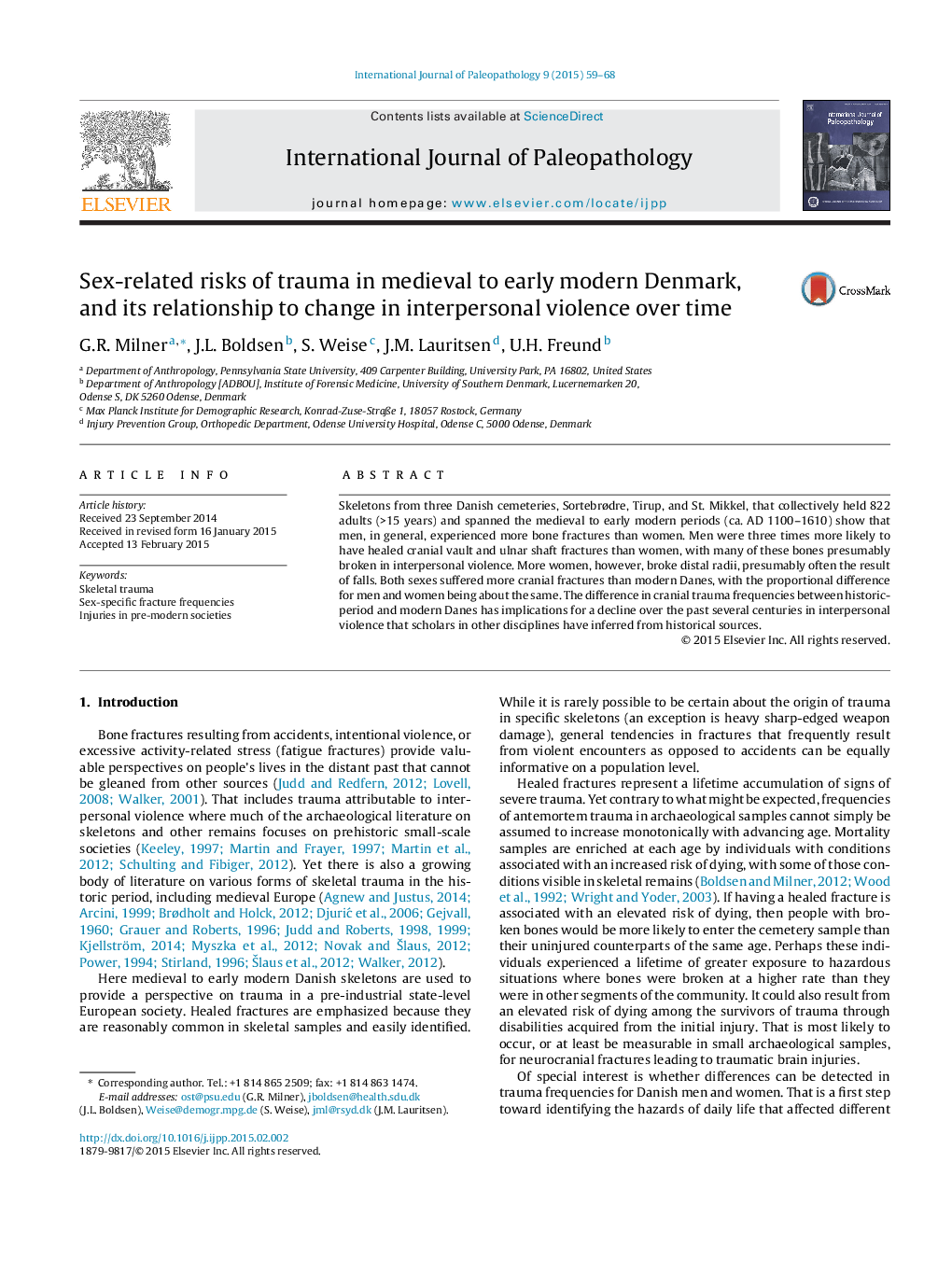| Article ID | Journal | Published Year | Pages | File Type |
|---|---|---|---|---|
| 101365 | International Journal of Paleopathology | 2015 | 10 Pages |
Skeletons from three Danish cemeteries, Sortebrødre, Tirup, and St. Mikkel, that collectively held 822 adults (>15 years) and spanned the medieval to early modern periods (ca. AD 1100–1610) show that men, in general, experienced more bone fractures than women. Men were three times more likely to have healed cranial vault and ulnar shaft fractures than women, with many of these bones presumably broken in interpersonal violence. More women, however, broke distal radii, presumably often the result of falls. Both sexes suffered more cranial fractures than modern Danes, with the proportional difference for men and women being about the same. The difference in cranial trauma frequencies between historic-period and modern Danes has implications for a decline over the past several centuries in interpersonal violence that scholars in other disciplines have inferred from historical sources.
